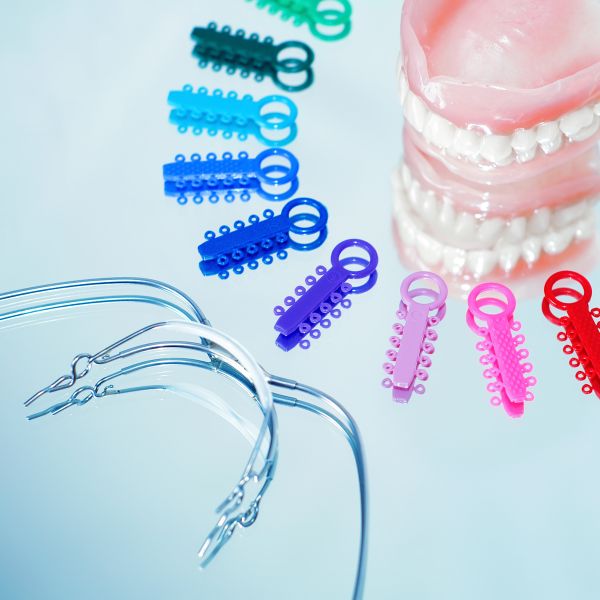How to Fix Your Smile: Clear, Ceramic or Traditional Braces?

When it is time to fix your teeth, gone are the days when the only option was to get traditional metal braces. These devices can be quite bulky, and they are highly visible in the wearer's mouth. That can leave the person feeling even more self-conscious than before the braces were installed.
Things are much different now. There are a handful of devices that can be used to straighten a person's smile, like clear braces, ceramic braces and lingual braces that are much less visible than traditional braces.
Here are three different types of braces that are commonly used to deal with teeth alignment issues.
Different types of braces
1. Traditional metal braces
Despite the fact that many new alternatives have emerged, traditional braces are still the most commonly used orthodontic devices. This is due to the fact these devices remain the most affordable way to straighten teeth. Metal braces have evolved a great deal in recent years, and newer designs are slicker than their predecessors. Patients now have the option of customizing their device with the color of the favorite sports teams or whatever else suits their personal style.
Today's metal braces are less invasive than the bulky contraption people had to wear decades ago that looked like TV antennas. Some modern traditional braces even come with improved components, like heat-activated wires that use the patient's body heat to increase comfort.
Pros
- They are the cheapest way to fix a patient's smile if dealing with alignment issues
- Colored bands and brackets are now available
- Metal braces are more effective than other alternatives
Cons
- They are very noticeable in the wearer's mouth
- Food tends to get stuck in the brackets
- Cleaning these devices can be difficult
2. Ceramic Braces
Ceramic braces are similar to metal braces with only a few exceptions. Instead of using brackets made from metal, these are made out of ceramics and are customized to be the same color as the patient's natural teeth. Instead of the brackets being connected with metal wires, ceramic braces often come with clear wires, making them very hard to detect.
Pros
- A more discreet option
- More effective than clear braces
- Cheaper than other alternatives besides metal braces
Cons
- Costs more than traditional braces
- Brackets can easily become stained, making them more visible
- Requires a higher level of maintenance to keep the device stain free
3. Clear braces
Clear braces are quickly becoming the most popular option when it comes to replacing missing teeth. It is a great solution for those who want to straighten their teeth without everyone they interact with being aware of their treatment.
The way these work is that the patient gets a series of aligners to wear for around two weeks at a time. Each pushes the person's teeth closer to the desired position.
Pros
- Are virtually invisible
- Can be easily removed for meals and cleaning
- Make discreet treatments possible
Cons
- More expensive than other options
- Not as effective as metal braces
- Easily lost when removed
Contact one of our dentists to learn more about the different types of braces.
Let's get started …
Request a dental appointment here: https://www.yourdowntownmckinneydentist.com or call Sam Patel DDS, PA at (972) 638-5848 for an appointment in our McKinney dental office.
Related Posts
Anyone familiar with oral hygiene basics knows that dentists recommend brushing twice a day: once in the morning and once at night. However, you may not know why this is so. Why is once not enough? After all, experts recommend flossing only once a day. How is brushing your teeth different?Brushing your teeth is a…
When your general dentist says you need an oral sedative, you might have questions. There are many reasons why you might want or need an oral sedative. You may experience a lot of anxiety, or you may need a procedure that can cause discomfort. General dentists use several different kinds of oral sedatives to help…
Although many people believe that plaque and tartar are the same, they actually have significant differences. Understanding the distinctions between these two dental conditions can help you identify their warning signs and practice oral hygiene basics to avoid them.Plaque is a soft film containing millions of bacteria that build up on your teeth, gums, and…
Proper dental care is important for the overall health of your entire family. Routine oral care from a family dentist can have an impact not just on the appearance of your teeth and gums, but on their function as well. Dental health can also affect many systems of the body and should be prioritized to…
